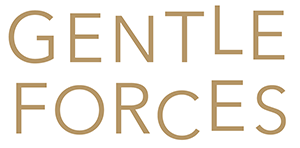
FAQ – CRANIOSACRAL THERAPY
CRANIOSACRAL THERAPY is an exceptionally gentle, yet extremely powerful hands-on healing method. Expert hands use gentle pressure to work on the nervous system and all the structures for growth, development and function of the nervous system. The tissues can begin to relax. Which is often reflected in kick-starting the immune response. Helping the body to reset its self-regulating functions, reducing pain and enabling your body to heal.
CRANIOSACRAL THERAPY works by helping the body‘s natural healing mechanisms dissipate the negative effects of stress on the central nervous system.
This is achieved through gentle manipulations of the CRANIOSACRAL SYSTEM, which maintains the environment in which the central nervous system functions. The CRANIOSACRAL SYSTEM includes the membranes and cerebrospinal fluid that surround and protect the brain and spinal cord, extending from the bones of the skull, face and mouth (which make up the cranium) down to the tailbone area (or sacrum). From within this tadpole shaped system, a craniosacral “rhythm” is generated.
Like the pulse of the cardiovascular system, the CRANIOSACRAL RHYTHM can be felt throughout the body. The role of this system in the development and performance of the brain and spinal cord is so vital, that an imbalance or dysfunction in it can cause sensory, motor and/or neurological disabilities.
Using a touch generally no heavier than 5 grams, skilled practitioners are able to pick up the source of an obstruction or stress, which is felt as a subtle pattern of motion – rhythm, tension and pulsation – emanating from deep within the core structures of the body. These movements reflect the CRANIOSACRAL MOTIONS that are expressed in all tissues throughout the body. Once a source of disturbance has been determined, the practitioner assists the natural movement of the fluid and related soft tissue to help the body self-correct. This simple action is often all it takes to remove a restriction.
CRANIOSACRAL THERAPY requires no medical aid, other than the hands of the practitioner (no needles or chemicals), and it may be combined with other complementary therapies.
CRANIOSACRAL THERAPY was pioneered and developed by osteopathic physician John E. Upledger in 1970, based on the research of the work of Dr. William Sutherland, the father of cranial osteopathy. After extensive scientific studies as Professor of Biomechanics at Michigan State University, Upledger‘s continued work in the field ultimately resulted in his development of CRANIOSACRAL THERAPY. The practice of CRANIOSACRAL THERAPY is now widespread in the US, Canada, the UK and other western European countries, and is an integral part of complementary health care.
CRANIOSACRAL THERAPY is increasingly used as a preventive health measure, because it complements the body’s natural healing processes and bolsters the body’s resistance to disease. While traditional medicine often concentrates on treating the symptoms of illness, CRANIOSACRAL THERAPY explores the causes and treats them at their source.
CRANIOSACRAL THERAPY is effective for a wide range of medical problems associated with pain and dysfunction. Each treatment is tailored to a patient‘s individual needs. The largest group of people using CRANIOSACRAL THERAPY suffer from chronic symptoms which have not been aided by other approaches.
- sinusitis
- tinnitus
- migraine headaches
- chronic neck and back pain
- temporomandibular-joint-syndrome (TMJ)
- traumatic brain and spinal cord injuries
- acute state of exhaustion and chronic fatigue
- post surgical dysfunction
- menstrual pain and perimenopausal symptoms
- anxiety
CRANIOSACRAL THERAPY is safe for children, infants and newborns as application involves an extremely light touch. The timely identification and release of restrictions in the CRANIOSACRAL SYSTEM within young patients can prevent future difficulties:
- birth trauma
- colic
- developmental delay
- learning difficulties
- hyperactivity
The course of the healing process will be determined by you, so the number of treatments varies from individual to individual. It depends on how your body reacts to this form of treatment.
If CRANIOSACRAL THERAPY is beneficial for you with your individual set of symptoms, you can feel a difference almost immediately after the treatment. Reactions from the treatment are possible within 72 hours.
In some cases the problem is completely resolved after one treatment, more often it is sensible to revisit, sometimes weekly, sometimes every 4 to 8 weeks to support the body in its natural healing response. Generally, chronic conditions take longer than acute ones.
The reorganisation of tissues can show itself through a sense of uneasiness or even pain. The tissues were shown by the therapist a new way, and they are now relaxing and re-organising themselves. An alternate exchange of fluids can lead to a changed blood flow and an improved lymph flow.
Here various factors might be at play:
A deeper seated problem/symptom became apparent after something else that released.
When tension subsides, blood flow and metabolic waste products can be increased and the body re-organises itself. Both can be felt as pain or discomfort.
Relaxation can be perceived physically and emotionally as having ‘more space’. This can be recognised as pain and eventually as something that is unfamiliar.
